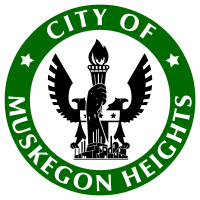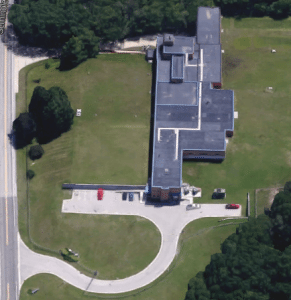
John Allen Water Filtration Plant Director
Muskegon Heights Water System
Water Quality Report 2018
Why Do You Get This Report?
The Environmental Protection Agency (EPA) requires every community water supply in the US, to report annually, to all its customers, the specific details of our water quality and any contaminants that may found in our tap water and source water. In order to ensure that this information reaches all our customers the EPA requires that this report be provided to each household and business we supply.
The City of Muskegon Heights water system believes this is also a wonderful opportunity to provide additional information to our customers about system related topics that may impact their service.
Water Meter Replacement
It has been over 20 years since the city last replaced their water meters. Beginning this fall the city will begin replacing every water meter and its remote reader. This upgrade will help the city streamline the billing process by significantly increasing the frequency in which the meters are read and reducing the time needed to obtain those readings. This will allow the city to provide the residents with a monthly bill, instead of quarterly bill currently in use. This change in reading frequency and billing will reduce the burden, sometimes associated with the larger quarterly bill. In addition to the smoothing of the billing process these new meters, and the frequency in which they are read, will help the city and its residents identify potential problems, such as leaks, on a timelier basis thus avoiding potentially large bills. For this upgrade to occur it will be necessary for the contractors to access the water meter, which is located inside most of the homes in the city. The homeowner will be informed prior to the replacement to allow them time to schedule an appointment. Should the homeowner fail to respond to this request, the water will be shut-off until we can access the home and replace the meter.
Lead and Drinking Water
Infants and children who drink water containing lead in excess of the AL could experience delays in their physical or mental development. Children could show slight defects in their physical and mental development. Children could show slight deficits in attention span and learning abilities. Adults who drink this water over many years could develop kidney problems or high blood pressure.
If present, elevated levels of lead can cause serious health problems, especially for pregnant women and young children. Lead in drinking water is primarily from materials and components associated with service lines and home plumbing. The City of Muskegon Heights Water System is responsible for providing high quality drinking water, but cannot control the varieties of materials used in plumbing components. Water that has been sitting for several hours has the potential to pick-up these contaminants, in order to minimize the potential exposure, you can flush the tap for 30 seconds to 2 minutes before using it for drinking or cooking. If you are concerned about lead in your water, you may wish to have it tested. Information on lead in drinking water, testing methods, and steps you can take to minimize exposure is available from the safe drinking water hotline at 1 (800) 426-4791 or their website at http://www.epa.gov/safewater/lead.
Copper in Drinking Water
Copper is an essential nutrient, but some people who drink water containing copper in excess of the action level over a relatively short amount of time could experience gastrointestinal distress. Some people who drink water containing copper in excess of the action level over many years could suffer liver or kidney damage. People with Wilson’s Disease should consult their personal doctor. If you are concerned about copper in your water, you may wish to have it tested. Information on copper in drinking water, testing methods, and steps you can take to minimize exposure is available from the safe drinking water hotline at 1 (800) 426-4791 or their website at http://www.epa.gov/safewater/lead .
Cryptosporidium and Drinking Water
Cryptosporidium is a microbial pathogen found in surface water throughout the U.S. Although filtration removes Cryptosporidium, the most commonly-used filtration methods cannot guarantee 100 percent removal. Our monitoring indicates the presence of those organisms in our source water and/or finished water. Current test methods do not allow us to determine if the organisms are dead or if they are capable of causing disease. Ingestion of Cryptosporidium may cause cryptosporidiosis, an abdominal infection. Symptoms of infection include nausea, diarrhea, and abdominal cramps. Most healthy individuals can overcome the disease within a few weeks. However, immune-compromised people, infants and small children, and the elderly are at greater risk of developing life-threatening illness. We encourage immune-compromised individuals to consult their doctor regarding appropriate precautions to take to avoid infection. Cryptosporidium must be ingested to cause disease, and it may be spread through means other than drinking water.
Do I need to take special precautions?
The EPA sets legal limits and regulates the amount a contaminant is allowed in drinking water provided by all public water systems. Sources of drinking water worldwide (both tap and bottled) may reasonably be expected to contain at least small amounts of some contaminants. Though contaminants are present, it does not necessarily indicate that the water poses any kind of health risk. We treat our water according to EPA regulations.
While EPA’s health-based standards for drinking water are generally safe, some people may be more sensitive to contaminants in drinking water than the general population. Some infants, children or elderly, individuals who have undergone organ transplants, people with HIV/AIDS or persons receiving chemotherapy can be at risk for infections. These people should seek advice from their health care providers. More information on potential health effects of specific contaminants can be obtained by contacting the EPA’s Safe Drinking Water hotline at 1(800) 426-4791 or at their website at http://www.eps.gov/safewater/dwhealth.html.
About Contaminants
The sources of drinking water (both tap water and bottled water) include rivers, lakes, streams, ponds, reservoirs, springs, and wells. As water ravels over the surface of the land or through the ground, it dissolves naturally occurring minerals and, in some cases, radioactive material, and can pick up substances resulting from the presence of animal or human activity.
Contaminants that may be present in source water include: Microbial contaminants such as viruses and bacteria which may come from sewage treatment plants, septic systems, agricultural livestock operations and wildlife; Inorganic contaminants such as salts and metals which can be naturally-occurring result from urban storm water runoff, industrial or domestic wastewater discharges, oil and gas production, mining or farming: Pesticides and herbicides which may come from a variety of sources such as agriculture, urban storm water runoff and residual uses; Organic chemical contaminants including synthetic and volatile organic chemicals which are by-products of industrial processes and petroleum production, and can also come from gas stations, urban storm water runoff and septic systems; and Radioactive contaminants can be naturally-occurring or be the result of oil and gas production and mining activities.
This report is also available on the internet at: http://www.cityofmuskegonheights.org
2017 Water Quality Data Table
The table below lists all the drinking water contaminants that were detected during the calendar year as noted on this report. The presence of contaminants in the water does not necessarily indicate that the water poses a health risk. The federal EPA or state DEQ allows us to monitor certain contaminants less than once per year, because the concentrations of the contaminant have been proven not to change frequently.

Water Quality Table Key and Definitions
MCL – Maximum Contamination Level: This is the highest level of a substance that is allowed in drinking water. MCLs are set as close to the MCLGs as feasible using the best available treatment technology.
MCLG – Maximum Contamination Level Goal: The level of a substance in drinking water below which there is no known or expected health risk. MCLG’s allow for a margin of safety.
MRDL – Maximum Residual Disinfectant Level: The highest level of a disinfectant allowed in drinking water. There is convincing evidence that the addition of a disinfectant is necessary for control of microbial contaminants.
MRDLG – Maximum Residual Disinfectant Level Goal: The level of drinking water disinfectant below which there is no known or expected risk to health. MRDLGs do not reflect the benefits of the use of disinfectants to control microbial contamination.
ppm – Parts per Million: You win one million-dollars in the lottery. You give a friend one dollar. That is 1 ppm.
ppb – Parts per Billion: Your rich uncle passes away and leaves you $10 million. However, in counting your inheritance, you discover that 1 cent is missing. That is 1 ppb.
Turbidity – A measure of the clarity of the water. We monitor it because it is a good indicator of the effectiveness of our filtration process.
NTU – Nephelometric Turbidity Unit: Measurements of the minute suspended particles in the water. Used to judge water clarity.
TT – Treatment Technique: A required process intended to reduce the level of a substance in drinking water.
AL – Action level: The amount of a substance when exceeded requires a treatment change or other response by a water system.
n/a – Not applicable
n.d. – Not detected
How Did We Do?
The Muskegon Heights Water System is proud to present our annual Water Quality Report. This report provides important information about your drinking water and our compliance with state and federal regulatory requirements. We have continued to meet and often time exceed the requirements set forth by the EPA and the MDEQ. The testing specifics are located in the table inside of this report. The Muskegon Heights Water System monitors not only the substances located in this table, but many other contaminants as well. This table reflects only those substances found to be present in the water. Our constant goal is to provide you with a safe and dependable supply of drinking water.
More Information:
If you have questions regarding your bill, leaks or other water quality or service related issues, please call John Allen at the Water Filtration Plant at 231-780-3415, during normal business hours Monday through Friday.

